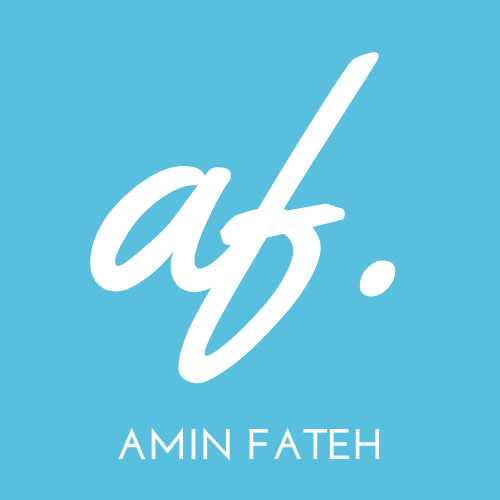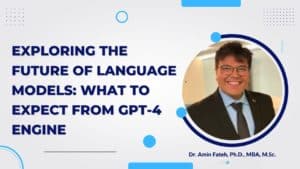Hello everyone,
Since its inception, ChatGPT has received both praise and skepticism for its potential to revolutionize the field of education. While some institutions have banned ChatGPT’s use, others believe ChatGPT can provide personalized learning experiences and improve learning outcomes with proper implementation.
In this blog post, I will explore ChatGPT’s potential educational benefits.
This innovative technology has the potential to (1) personalize learning experiences, (2) increase student engagement, and (3) improve learning outcomes. With its advanced understanding of natural language and ability to generate human-like responses, ChatGPT is transforming how we can use it in education. So, let’s dive in and explore how this powerful tool can help shape the future of learning!
Here are some ways ChatGPT can help in education:
- Personalized Learning: ChatGPT can create personalized learning experiences for students. By analyzing students’ responses and understanding their learning styles, ChatGPT can adapt to their individual needs and provide targeted feedback. This can help students learn at their own pace and in a way that works best for them.
- Here are a few examples of institutions that have been reported to be using ChatGPT:
- Carnegie Learning: Carnegie Learning is an educational technology company that provides personalized learning solutions for K-12 students. They use ChatGPT to power their virtual tutoring platform, which provides personalized feedback and guidance to students.
- OpenAI: OpenAI is an artificial intelligence research laboratory that developed the ChatGPT language model. They released the model under an open-source license, making it available for researchers, developers, and educators.
- Reference: https://openai.com/blog/openai-api/
- Coursera: Coursera is an online learning platform that offers courses and degree programs from top universities and organizations. They use ChatGPT to provide personalized feedback and support to learners in their courses.
- ETS: ETS (Educational Testing Service) is a nonprofit organization that develops and administers standardized tests such as the TOEFL and GRE. They are exploring using ChatGPT for adaptive testing, allowing them to provide personalized tests to each individual based on their knowledge and abilities.
- Please note that this is not a complete list, and other institutions may use ChatGPT for personalized learning.
- Here are a few examples of institutions that have been reported to be using ChatGPT:
- Interactive Learning: ChatGPT can make learning more interactive and engaging. Students can ask questions and receive immediate responses, leading to a more dynamic learning experience. ChatGPT can also create interactive quizzes and games, making learning fun and engaging.
- ChatGPT has been adopted by several organizations for interactive learning also, and here are a few examples:
- Duolingo: Duolingo is a language-learning platform that uses ChatGPT to power its chatbots, which allow learners to practice their language skills in conversation with an AI tutor.
- Reference: https://www.duolingo.com/learn
- IBM Watson: IBM Watson is an AI platform that provides various services, including chatbots for interactive learning. Watson uses ChatGPT to enable natural language interactions between learners and AI tutors.
- Reference: https://www.ibm.com/watson
- Lingvist: Lingvist is a language-learning platform that uses ChatGPT to power its AI tutors, providing learners with personalized feedback and guidance.
- Reference: https://lingvist.com/
- Babbel: Babbel is a language-learning app that uses ChatGPT to power its speech recognition technology, allowing learners to practice pronunciation and conversation skills with an AI tutor.
- Reference: https://www.babbel.com/
- LingvAI: LingvAI is an AI-powered language-learning platform that uses ChatGPT to provide learners with personalized language lessons and practice exercises.
- Reference: https://www.lingvai.com/
- Please note that this is not an exhaustive list, and other organizations may use ChatGPT for interactive learning.
- Duolingo: Duolingo is a language-learning platform that uses ChatGPT to power its chatbots, which allow learners to practice their language skills in conversation with an AI tutor.
- ChatGPT has been adopted by several organizations for interactive learning also, and here are a few examples:
- Language Learning: ChatGPT can help students learn new languages by providing real-time translation and pronunciation feedback. Students can practice speaking and writing in a new language and receive feedback on their grammar, syntax, and vocabulary.
- ChatGPT can be used in a variety of ways to support language learning. Here are a few use cases:
- Chatbots for Conversation Practice: ChatGPT can power chatbots that simulate conversation practice with a native speaker. Learners can practice their speaking and listening skills with the chatbot, which can provide personalized feedback and corrections.
- Language Assessment: ChatGPT can assess learners’ language proficiency by analyzing their written or spoken responses. The system can provide personalized feedback on grammar, vocabulary, and pronunciation and identify areas where the learner needs improvement.
- Personalized Tutoring: ChatGPT can act as a personalized tutor for language learners, providing them with one-on-one assistance and feedback. The system can identify areas where the learner is struggling and provide personalized explanations and examples to help them understand the concepts better.
- Adaptive Learning: ChatGPT can be used in adaptive learning systems to provide personalized content to language learners based on their learning progress, interests, and preferences. The system can recommend relevant topics, resources, and exercises to learners and also provide feedback and guidance to help them improve their language skills.
- Language Translation: ChatGPT can be used to develop language translation applications that provide accurate and natural translations of text and speech in real-time. This can help language learners understand and communicate with people who speak a different language.
- These are just a few examples of how ChatGPT can be used in language learning. The system can be customized to meet the specific needs of learners in different languages and contexts.
- ChatGPT can be used in a variety of ways to support language learning. Here are a few use cases:
- Teacher Support: ChatGPT can provide teachers with support and resources. Teachers can ask ChatGPT for lesson plan ideas, assessment tools, and teaching strategies. ChatGPT can also provide teachers with feedback on their teaching methods, helping them improve their practice.
- Student Support: ChatGPT can provide students with support outside of the classroom. Students can ask ChatGPT for help with homework, study tips, and exam preparation. ChatGPT can also provide students with mental health support by connecting them with resources and providing coping strategies.
- Career Guidance: ChatGPT can be used to provide students with career guidance. Students can ask ChatGPT about career paths, required qualifications, and job prospects. ChatGPT can also be used to provide students with feedback on their resumes and cover letters.
- ChatGPT can be used in career guidance by providing personalized advice and guidance to individuals based on their skills, interests, and career aspirations. Here are a few ways in which ChatGPT can be used in career guidance:
- Personalized Career Assessments: ChatGPT can be used to develop personalized career assessments that analyze an individual’s skills, interests, and personality traits to recommend career paths that are a good match for them.
- Career Advice and Guidance: ChatGPT can act as a virtual career coach, providing individuals with personalized advice and guidance on career-related topics such as job search strategies, resume writing, and interview preparation.
- Skill Development: ChatGPT can recommend personalized skill development resources and learning paths to help individuals acquire the skills they need for their desired career paths.
- Job Matching: ChatGPT can analyze an individual’s skills and experience and recommend job openings that match their qualifications and career goals.
- Here are a few organizations that are using ChatGPT for career guidance:
- Career Karma: Career Karma is a career development platform that uses ChatGPT to provide personalized career guidance to individuals interested in careers in tech.
- Reference: https://careerkarma.com/
- Mya Systems: Mya Systems is an AI-powered recruiting platform that uses ChatGPT to provide candidates with personalized career guidance and job recommendations.
- Reference: https://www.hiremya.com/
- Eightfold.ai: Eightfold.ai is a talent management platform that uses ChatGPT to provide employees with personalized career guidance and skill development recommendations.
- Reference: https://eightfold.ai/
- SAGE Scholars: SAGE Scholars is a college savings program that uses ChatGPT to provide personalized career and college advice to students and their families.
- Reference: https://www.sagescholars.com/
- Career Karma: Career Karma is a career development platform that uses ChatGPT to provide personalized career guidance to individuals interested in careers in tech.
- Please note that this is not a complete list, and other organizations may use ChatGPT for career guidance.
- ChatGPT can be used in career guidance by providing personalized advice and guidance to individuals based on their skills, interests, and career aspirations. Here are a few ways in which ChatGPT can be used in career guidance:
- Accessibility: ChatGPT can improve accessibility in education by providing support to students with disabilities. Students with visual or hearing impairments can use ChatGPT to access learning materials in the best way for them. ChatGPT can also be used to provide support to students with learning disabilities by providing them with targeted feedback and resources.
Here are some examples of impressive and creative uses of ChatGPT:
- Art and Creativity: The British Museum used ChatGPT to generate creative responses to art, providing visitors a unique and engaging way to explore the museum’s collections.
- Storytelling and Writing: The New York Times used ChatGPT to write articles on sports and finance, demonstrating the technology’s ability to produce high-quality content quickly and efficiently.
- Language Learning: Duolingo used ChatGPT to create a chatbot to converse with users in multiple languages, helping learners practice their skills more interactively and engagingly.
- Mental Health: Woebot, a mental health chatbot, uses ChatGPT to provide users with personalized conversations that help them manage stress and anxiety.
- Reference: https://woebot.io/
- Virtual Assistants: Several companies, including OpenAI, have used ChatGPT to create virtual assistants that can perform various tasks, from scheduling appointments to answering customer inquiries.
- Reference: https://openai.com/blog/openai-api/
These are just a few examples of how ChatGPT has been used creatively and impressively.
Implementing ChatGPT in education can pose several challenges, also as mentioned below:
- Data privacy concerns: ChatGPT requires large amounts of data to train and improve its performance. This data may include personal information about students, which raises concerns about data privacy and security.
- Bias in training data: ChatGPT’s training data may contain biases that can impact its performance, especially in areas such as education where significant cultural or social biases may exist. Careful consideration and evaluation of the training data is required to ensure fairness and accuracy.
- Limited availability of resources: Training and deploying ChatGPT requires significant resources, including computational power and expertise in natural language processing. Smaller institutions may struggle to find the resources necessary to implement this technology.
- Lack of interpretability: ChatGPT’s decision-making process is based on complex algorithms and neural networks, which can be challenging to interpret and explain. This lack of interpretability can make identifying and addressing issues such as bias or errors challenging.
- Ethical considerations: AI in education raises critical ethical considerations, such as the potential impact on teacher-student interactions and the need for transparency and accountability in decision-making. Careful consideration of these ethical concerns is necessary to ensure that ChatGPT is used responsibly and ethically in education.
ChatGPT, like any technology, can pose potential dangers if not properly implemented. Here are a few examples:
- Misinformation: ChatGPT relies on the data it has been trained on, which may include inaccurate or biased information. ChatGPT could inadvertently spread misinformation or reinforce biases if not properly implemented and monitored.
- Privacy violations: As mentioned earlier, ChatGPT requires access to significant amounts of data to function correctly. If not properly implemented, this data could be vulnerable to hacking or other security breaches, putting student and teacher data at risk.
- Emotional harm: ChatGPT may interact with students in a way that is perceived as insensitive or inappropriate. This could potentially harm a student’s emotional well-being, especially if they struggle with mental health issues.
- Overreliance on technology: Overreliance on ChatGPT could reduce human-to-human interactions, which are crucial for building relationships and creating a positive learning environment. This could negatively impact the social and emotional development of students.
Properly implementing ChatGPT in education is crucial to ensure it is used safely and responsibly. This includes monitoring and addressing potential dangers and ethical considerations and providing appropriate training and support for teachers and students.
In conclusion, ChatGPT can potentially transform how we learn and teach. Its ability to understand natural language and generate human-like responses can enhance student engagement, improve learning outcomes, and make education more accessible to all students. While there may be challenges in implementing ChatGPT in education, the potential benefits are enormous and should be explored further.
(Note: Comments are open for this article, please let me know what your opinion is of using ChatGPT in education)



